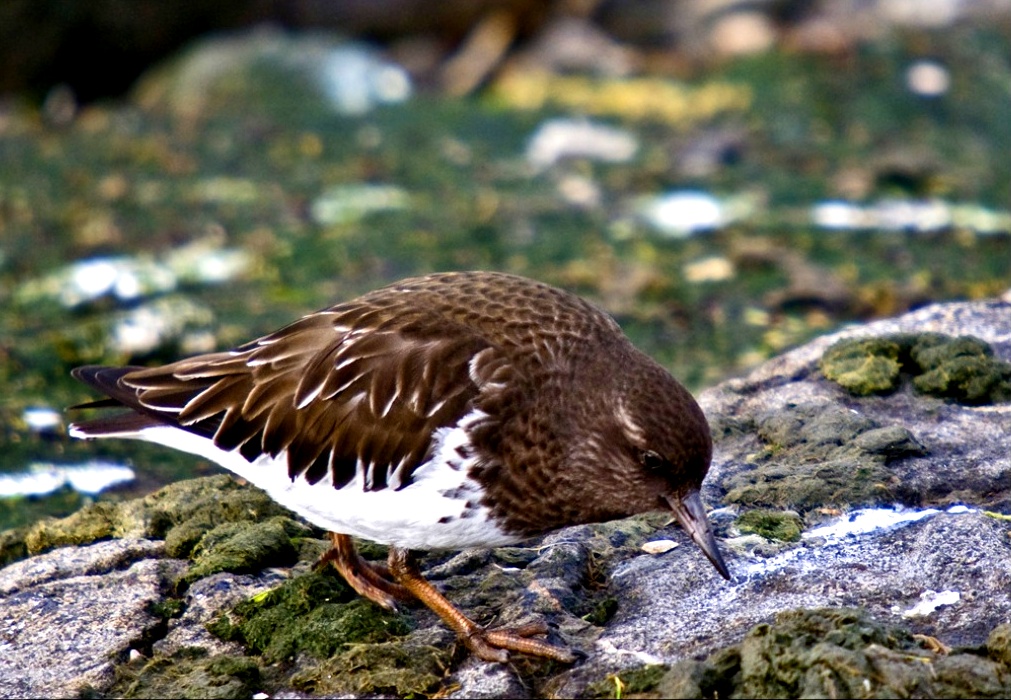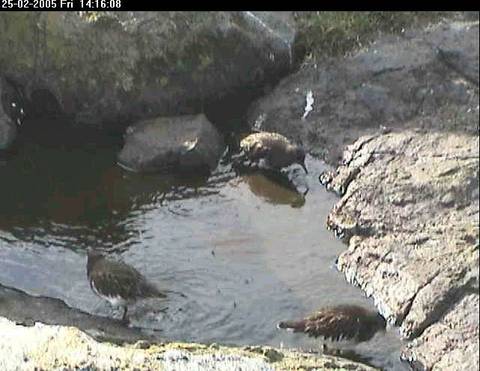
Ryan took this image in January 2009. At that time of year there were over a dozen turnstones foraging across the island.
- After a rain it can often be seen as in this photograph, bathing in the freshwater pools in rock depressions. Photos by PB.
The Black Turnstone breeds in Western and Southern Alaska on the coastal plain. It winters only on the Pacific coast, from southeast Alaska to central Mexico. It is the most abundant shorebird of rocky shorelines. Favourite habitats include reefs, rocky beaches, jetties, and gravel bars at the mouths of rivers or along lagoons. It may also forage on adjacent mudflats wet sandy beaches, floating kelp beds, and piles of washed-up seaweed. Black Turnstones have been recorded roosting on dry rocks, jetties, and floating log booms at which time they may gather into extremely dense flocks.
It is widely distributed along the inner and outer coast. Its distribution is largely restricted to rocky coastal shorelines, but it frequents many fiords and protected inlets. It is a vagrant in the interior. The Black Turnstone usually occurs in flocks of 10 to 30 birds at Race Rocks where it overwinters.
This slide show shows the Black Turnstone being part of the Food Web at Race Rocks providing energy for the Peregrine falcon!
Reference used:http://rbcm1.rbcm.gov.bc.ca/nh_papers/gracebell/english/b_turnst.htm
Below are the records for population numbers of Black Turnstones observed in the Christmas Bird Counts.
Domain Eukarya
Kingdom Animalia
Phylum Chordata
Subphylum Vertebrata
Class Aves
Order Charadriiformes
Family Scolopacidae
Genus Arenaria
Species melanocephala
Common Name: Black Turnstone
Other Members of the Class Aves at Race Rocks.
and Image File |
 The Race Rocks taxonomy is a collaborative venture originally started with the Biology and Environmental Systems students of Lester Pearson College UWC. It now also has contributions added by Faculty, Staff, Volunteers and Observers on the remote control webcams. The Race Rocks taxonomy is a collaborative venture originally started with the Biology and Environmental Systems students of Lester Pearson College UWC. It now also has contributions added by Faculty, Staff, Volunteers and Observers on the remote control webcams.Angela Chaisson, PC yr 28 |

